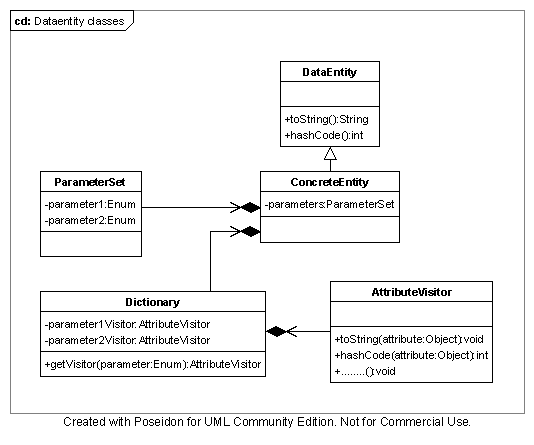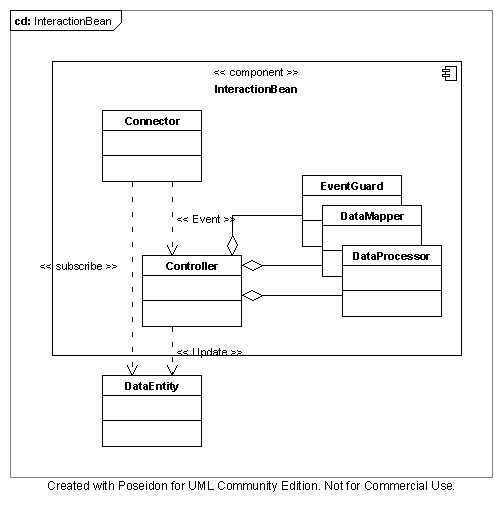The core Java platform doesn't provide much in the way of data object functionality. The default object type declares a handful of methods like toString, equals, hashCode, but one of the first thing one typically does, when using this methods is overriding the method with a more useful implementation. This is not trivial to do correctly, but autogeneration tools exist which can do this for you, by by applying an appropriate iterative operation to the object attributes. More advanced data functionality also exist, like cloneable, compareable, externalizable, etc, which has to be implemented by any data objects wanting to use these features. This is done alone the same line as before, by iteration over the objects attributes in some manor.
After having to implementing these kind of operations a sufficient number of this, I started to wonder (in the spirit of OO), whether I could extract this behavior into a super type, which could handle this 'attribute' bookkeeping for me, and I could then settle for defining which attributes should make up the different data objects. After all, the implementation of the relevant methods looked pretty much the same, implemented the function by doing something on each attribute and aggregate the result in some way.
The first thing which needs to be done is formalizing the notion of attributes into something which can be accessed programmatically in a generic manor. This can be done by defining the attributes on such a data object, lets call it a DataEntity, by a set of enum type parameters/attribute keys
The result is that we can iterate over a DataEntitys parameters, and access each of the objects attributes. The implementation of every operation on the DataEntity which uses the full state of the object would be of the form :
Result getSomething() { Result result = new Result(); Iterator iter = dataentity.getKeys().iterator(); while (iter.hasNext() { Enum parameter = iter.next(); AttributeVisitor visitor = dictionary.getVisitor(parameter); result = result + visitor.getSomething(); } return result; }
A problem with the code above is that it assumes the attribute has a getSomething() method to call. This is only the case for operations defined on the generic Object class, and even then we usually what to override the default implementation.
To overcome this shortcome we can define a visitor for each parameter, which can provide the needed operation. Lets call the set of attribute visitors the dictionary for the DataEntity. The getSomething operation would then instead look like this:
Result getSomething() {
Result result = new Result();
Iterator iter = dataentity.getKeys().iterator();
while (iter.hasNext() {
Enum parameter = iter.next();
AttributeVisitor visitor = dictionary.getVisitor(parameter); Object attribute = getAttribute( parameter ); result = result + visitor.getSomething(attribute); } return result; }
The task of defining the individual processing of attribute then amount to defining the visitor for each attribute. Fortunately it is possible to define a default object visitor, which mostly delegates operations to the object class methods. This means a simple dictionary could consist of the default visitor for all parameters. The resulting entities participating in usage defining a particular type of dataentity are shown in figure 1.

The already exists a number of specialized data object types, like Data Transfer Object, Java Data Object, Service Data Objects etc., but these are all attempts of adding data functionality in a specific context, e.g. persistence, data source decoupling, data transfer. The focus of these data object types are not to increase the functionality of generic data manipulation, where the purpose of the DataEntity is to make as powerful a generic data object.
There has previously been attempts at adding generic data object functionality, but these have typically being in the form of autogeneration, reflective or aspect-oriented behavior. The problem with these approaches are that they step outside of the normal object oriented code and and resort to 'smarter' functionalities. This results in application behavior, which appears like magic to the average developer and can be very difficult to trace. Furthermore, it is rather difficult to extend design based on autogenerated, reflective or aspect-oriented features.
The dataentity object is an attempt to add a more powerful data object to Java. The idea is to formalise the concept of object state, into a set of object attributes, which can be accessed in a generic manner. The result of doing this that it becomes possible to implement data manipulation logic in the super Dataentity type, which specialized data types inherits.
This is used for implementations of powerful data operations: toString, hashcode, equals, copy(clonable) and externalize. Two dataentity can be be compared to produce a difference object. Difference objects can be used to update state of dataentity objects.
The dataentity object implements the composition design pattern, this means dataentity objects can have other dataentity objects as attributes.
The framework defines a dataentity processing object, the dataprocessor. Dataprocessor can be implemented to process generic dataentity, and can at instantiated time be configured to work on concrete attributes.
The dataprocessor object also implements the composition design pattern. This means logic engines can be constructed runtime by aggregation dataprocessors into complex dataentity structures.
A interaction bean provides controlled event handling to/from a dataentity object. A interaction bean is a logic entity consisting of: - Controller: Processes the event to and from the dataentity. The controller itself is composed of: -- Eventhandler: Detemines which event should be handled or discarded. Used for breaking event loops and avoid processing insignificant events. -- Mapper: Maps data from the outside domain to a dataentity object. -- Dataprocessor structure: Provides data processing functionality. - Connector: Provides a connection between the dataentity and the outside domain. Examples are Swing components or JSP.

Examples of Interaction beans can be found in the Swing Bean example.